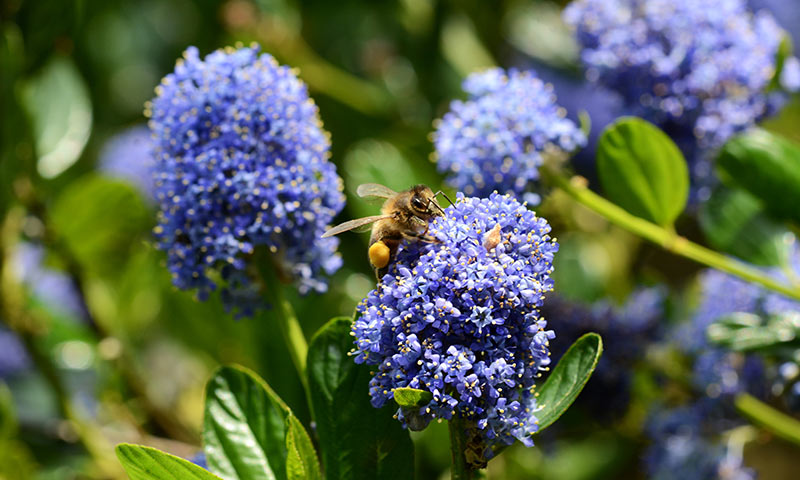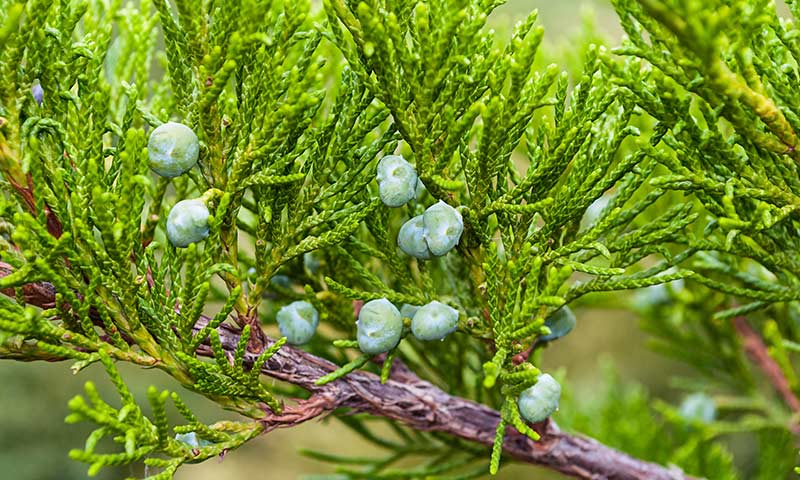Firescaping: How to Protect Against Wildfires With Fire-Resistant Plants
With widespread drought and climate change, wildfires have become increasingly common across the United States. Some regions are more prone to these dangers, but unplanned ground fires can occur no matter where you live. Whatever a wildfire's cause, you can make your home less vulnerable by landscaping with wildfire and fire-wise plants in mind.
Creating a fire-wise landscape starts by understanding critical, defensible zones around your home. By choosing and maintaining well-nourished plants and grasses, you can help protect your home against wildfire and enjoy beautiful plants and lawns.
The Immediate Zone
Firescaping focuses on reducing the chance that wildfire flames or embers will reach your home. The 5-foot-wide perimeter immediately surrounding your house is critical to preventing ground fires from igniting structures. Experts in wildfire-prone regions recommend keeping this immediate zone free of flammable materials and highly flammable plants.1
Limit flammable mulches, such as wood chips or pine needles, close to your house. Use decorative landscape rock, pea gravel, flagstone or pavers instead. Research shows that well-mowed, well-irrigated lawn grasses can stop advancing ground fires as well.1,3
There are no fire-proof plants, but a plant's moisture content can determine if or how a plant may burn.2,3 Some plants act as fire retardants when well-irrigated. Succulent plants, for example, tend to wilt and melt rather than ignite. Plants such as ice plant, hens-and-chicks, sedums, aloes and cactus fall in this category.
Keep any plants or garden décor from touching your home and acting as a bridge for fire — this helps limit pest intrusions, too. Avoid planting resinous plants, such as junipers, near your home. Their sticky, sap-like resin is highly flammable.

Succulent groundcovers, such as heartleaf ice plant, can help stop fires from spreading.
The Intermediate Zone
The area extending 30 feet from your home is usually the most heavily planted part of your yard. Plant selection and garden design play important roles in slowing fires that reach this intermediate, garden zone
A well-maintained, well-watered lawn is an excellent deterrent for ground fires in this zone as well.3 Break up lawns with low-growing groundcovers and attractive hardscapes, such as winding stone or concrete paths.1 These breaks slow fires and create room for firefighters to do their job should fire threaten your home.
Limit tall plants and trees in this zone. Tall plants may act as ladders to ignite taller trees and nearby structures. Deciduous trees, which drop their leaves each year, are generally less flammable than needle-leaved evergreens, such as pines, cedars or spruce.2 To keep fires from climbing higher, wildfire experts recommend removing tree branches within 10 feet of the ground.1,3
Plant short, non-resinous shrubs and plants in groupings, allowing more space between these landscape islands as you get closer to your home. Fire-resistant plants tend to die out quickly if ignited. Drought-tolerant artemisias, California lilacs, cotoneasters, verbenas and yarrows fall in this group.

Well-maintained lawns and stone walks help stop fire's advance.
The Transition Zone
Wildfire experts agree that slowing fires down before they reach your garden zone improves building survival significantly.1,3 Careful planting and plant maintenance in the transition zone — between 30 and 70 feet out from your home — can reduce a fire's available fuel and lessen its intensity.
When untended, this fuel-break zone is where more manageable ground or grass fires escalate into hard-to-control shrub and tree fires. Once shrubs and trees ignite, burning pieces of wood are more likely to travel on fire-induced winds.
As you transition away from gardens, continue to use lawn and hardscapes to interrupt the fire's path, eliminate fire ladders and keep fire close to the ground. Groundcovers that stay less than 18 inches tall can help keep fire low.1,2
Increase the spacing between shrubs and trees in this zone. Group small trees together, but leave at least 10 feet between the canopies (not trunks) of individual large trees or small tree groupings. Make sure to maintain your transition zone carefully. Keep trees and shrubs pruned, and remove all dead and damaged branches every year.1

Fire-wise California lilacs attract pollinators to firescaped homes.
The Natural Zone
The natural zone is where your firescaping meets neighbors or nature. It starts about 70 feet beyond your home and extends to 100 feet or your property line. Depending on where you live, this zone may be unirrigated, unmaintained and more at risk when wildfires approach.
Consider using native plants for your landscape in this zone. Adapted to local conditions, native plants may withstand wildfire best.1 Plant diversity is also beneficial for wildfire control and prevention of diseases and pests.
Experts recommend that natural or native grasses in this zone be maintained at 6 to 8 inches tall or shorter.1,3 Keep 10- to 15-foot areas of separation between trees and shrubs.3 In wildfire-prone areas, consider planting barriers of fire-retardant plants to help slow any fires that occur. These include shrubs like azaleas, sumacs and rugosa roses.
Don't delay maintenance in this area, despite the distance from your home. Consistently remove scrub brush and dead or dying shrubs or trees. They provide added fuel in wildfire season.

Resinous, needled evergreens, such as western junipers, can increase fire risks.
Fire-Wise Plant Care
How you care for the plants in your firescape is as important as what and where you plant. Unhealthy, poorly maintained plants are more vulnerable to fire and its spread than healthy, well-nourished, well-irrigated plants.1,2,3 In times of drought, always prioritize watering the plants closest to your home.
Water-wise plants and lawn grasses can improve firescapes and conserve water resources as well. Once established, lawn grasses such as Pennington Smart Seed grasses require up to 30% less water than ordinary grasses. And fire-wise, water-conserving succulents and drought-resistant plants stay healthy and well-hydrated with less irrigation, too.
Proper plant nutrition also goes a long way in helping fire-wise plants fulfill their role.3 Quality fertilizers such as the Pennington Full Season line and Pennington Rejuvenate Plant Food All Purpose 4-4-4 help keep your grass and other plants well-fed and attractive during wildfire season and year-round.
Whether you live in the heart of fire country or not, firescaping can help you protect your home against the threat of unplanned ground fires that come your way. At Pennington, we strive to bring you the finest in lawn and garden products and the expert advice you need to grow and enjoy beautiful lawns and landscapes. We're here to help you succeed.
Always read product labels thoroughly and follow instructions.
Sources:
1. F.C. Dennis, "Fire-Resistant Landscaping," Colorado State University Extension.
2. F.C. Dennis, "FireWise Plant Materials," Colorado State University Extension.
3. Y.C. Barkley, et al., "Protecting and Landscaping Homes in the Wildland/Urban Interface," University of Idaho Extension.



